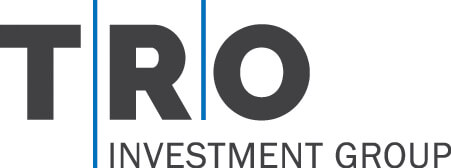Building a Defensive All-Weather Portfolio
Author
Richard A. Lund
Founder & Managing Member
TRO Investment Group

Author
Richard A. Lund
Founder & Managing Member
TRO Investment Group

Stock market turbulence. Economic downturns. Interest rate volatility. These are the types of overarching concerns that keep investors up at night. In my years as a portfolio manager, however, I have seen that these concerns can be addressed head-on: It is indeed possible to design investment portfolios that are defensive against stock market turbulence and also tend to serve well in all economic environments. Furthermore, this kind of defensive all-weather portfolio can be designed to achieve robust absolute returns.

Here are some of the crucial components we recommend as a blueprint for constructing such a portfolio.
1. The Private Marketplace
A strong defense against market turbulence starts with investing in private investment offerings rather than funds or securities traded on the public exchanges. Private offerings are generally not available to the public-at-large to buy and sell and are not marked to market daily. Therefore, their ongoing performance is not tied to the investing public’s irrational exuberance and fears, which are known to trigger severe swings in stock prices.
One could theoretically choose to invest entirely in the private marketplace. A more common approach is to invest in the public stock market and also make a strategic allocation to the type of defensive portfolio we’re describing here. This allows an investor to benefit from the formidable long-term growth potential of equities while also achieving an advantageous correlation balance for their overall investment portfolio.
(Note that an investor must generally meet certain financial criteria to qualify for investing in private investment offerings.)
2. Low-Correlation Alternative Assets
Low correlation to stocks is a key objective. Therefore, it is important to select those private offerings that do not invest in the stock market, but instead invest in alternative assets that are not materially correlated to publicly traded stocks.
Common Alternative Asset Classes
COMMON ALTERNATIVE ASSET CLASSES
Commodities and other natural resources | Options and other derivatives | Commercial Real Estate | Venture Capital | Collectibles | Private Equity | Foreign Exchange | Specialty Finance (Non-bank lending) | Insurance Products | Distressed Securities
While there exist many types of alternative assets, some may be more decorrelated from stocks than others. That’s one of the reasons we choose to focus on commercial real estate and specialty finance assets for building our defensive all-weather portfolios.
U.S. Private Commercial Real Estate Correlations…
Sources: NCREIF, FTSE NAREIT, S&P 500 Index, and Bloomberg Barclays.
U.S. PRIVATE COMMERCIAL REAL ESTATE CORRELATIONS…
(2000-2020)
To Stocks: 0.14
To Bonds: -0.12
To Listed REITs: 0.25
Sources: NCREIF, FTSE NAREIT, S&P 500 Index, and Bloomberg Barclays.
Commercial real estate fits our correlation criteria well, with a low 0.14 correlation to the stock market over the twenty-year period through 12/31/20, as well as a negative correlation (-0.12) to bonds.
Like bonds—which have a negative correlation (-0.34) to stocks—specialty finance investments also tend to have little or no correlation to stocks over the long term.
3. Income-Generating Assets
Income generation is another important attribute for an all-weather portfolio because the production of regular income helps stabilize investment performance from quarter to quarter in the face of market fluctuations.
That is another key reason we construct our portfolios with investments in commercial real estate and specialty finance. Both of these asset classes are known for generating consistent regular cash flow—from rental income and interest payments, respectively. (It should be pointed out that many alternative assets do not generate regular cash flow.)
4. Intra-Portfolio Decorrelation
In addition to serving as a defensive buffer, it’s important that the portfolio perform well in and of itself—without undue risk. So, since different markets continually ebb and flow, and market cycles differ from asset class to asset class, it is advantageous to select assets for the portfolio that are not significantly correlated to each other.
As an example, the major asset classes we focus on—commercial real estate and specialty finance—not only both have a low correlation to the stock market, they also have a slightly negative correlation to each other.
To further protect against internal portfolio risk, this defensive principle can be taken a step further by maintaining diversification within each broad asset class. That is why we diversify the two asset classes we hold with regard to market sector (see the table below), geographical region, asset manager, and so forth.
MARKET SECTORS
We recognize that individual investors may have somewhat limited resources that make it challenging to attain a high level of sector diversity within their private alternative allocation. In this case, the remedy might be to invest in private funds, or funds or funds, that do the diversification for you by investing in multiple real estate and specialty finance sectors.
5. Inherent Safeguards
In selecting asset classes for a defensive portfolio, our opinion is that the investor—or investment manager—should consider more than just the assets’ correlation and income-generation profiles and weigh other factors that help foster investment safety. To make this point more tangible, I’ll again refer to those two asset classes we focus on in our portfolios.
In our choice of commercial real estate and specialty finance, we were substantially influenced by the fact that they both feature a number of “built-in” safeguards (in addition to income generation) that protect against position risk within the portfolio.
INHERENT SAFEGUARDS
Commercial Real Estate
Intrinsic Value of Hard Assets The prices of hard assets tend to rise along with general inflation
Long-term Leases The long-term nature of commercial leases helps insulate rental cash flow from market swings
The Potential for Value Creation Real estate properties can typically be improved, and their marketability enhanced, so that their appreciation potential is not necessarily tied to the performance of the general real estate market
Specialty Finance
Collateral Many specialty finance investments have valuable assets backing the loans
Court Supervision The cash flow from Chapter 13 mortgages and consumer debt is based on underlying payments mandated and administered by a court of law
Asymmetric Return Profile In the area of litigation finance, the return profile is often asymmetric—the downside is generally much smaller than the potential upside
Commercial Real Estate
Intrinsic Value of Hard Assets The prices of hard assets tend to rise along with general inflation
Long-term Leases The long-term nature of commercial leases helps insulate rental cash flow from market swings
The Potential for Value Creation Real estate properties can typically be improved, and their marketability enhanced, so that their appreciation potential is not necessarily tied to the performance of the general real estate market
Specialty Finance
Collateral Many specialty finance investments have valuable assets backing the loans
Court Supervision The cash flow from Chapter 13 mortgages and consumer debt is based on underlying payments mandated and administered by a court of law
Asymmetric Return Profile In the area of litigation finance, the return profile is often asymmetric—the downside is generally much smaller than the potential upside
6. Best-in-Class Investment Managers
In seeking suitable private offerings, it is important to perform sufficient due diligence to make sure you’re investing with the most qualified managers who, at a minimum, satisfy these prerequisites:
Successful Track Record The manager specializes in their offering’s particular type of assets and has attained a substantiated successful track record in their field of specialization over many investment cycles.
Ability to Identify Opportunities and Add Value The manager has demonstrated a proven ability to make investments at favorable valuations and to enhance asset value through managerial know-how so that investment results are not solely dictated by the performance of the general market.
Substantial Alignment of Interests The manager commits significant sums of their personal capital to their own investment funds.
Defense Does Make a Difference
The formula discussed here for building all-weather defensive portfolios is more than mere theory. At TRO we’ve seen that, over the years, our portfolios have done what they’re supposed to do in adverse environments. When the stock market has fallen precipitously, our portfolios’ income has not followed suit and, in fact, has typically benefited from the decline and actually risen.
Such was the case during the recent economic downturn and stock market turbulence due to the Covid pandemic. During the pandemic, our portfolios’ cash distributions actually increased, and surpassed projections.
* * *
If you’re deeply concerned about the effects of stock and bond market volatility and economic slowdowns on your investment holdings, I encourage you to further explore the subjects of private alternative investments and building a defensive all-weather portfolio.
Performance expectations are subject to future adjustment and revision. The information provided is historical and is not a guide to future performance. Past performance is not necessarily indicative of future results. Any decision to invest must be based solely upon the information set forth in offering documents furnished by TRO Investment Group regardless of any information investors may have been otherwise furnished. This is neither an offer nor solicitation for the sale of a security.
